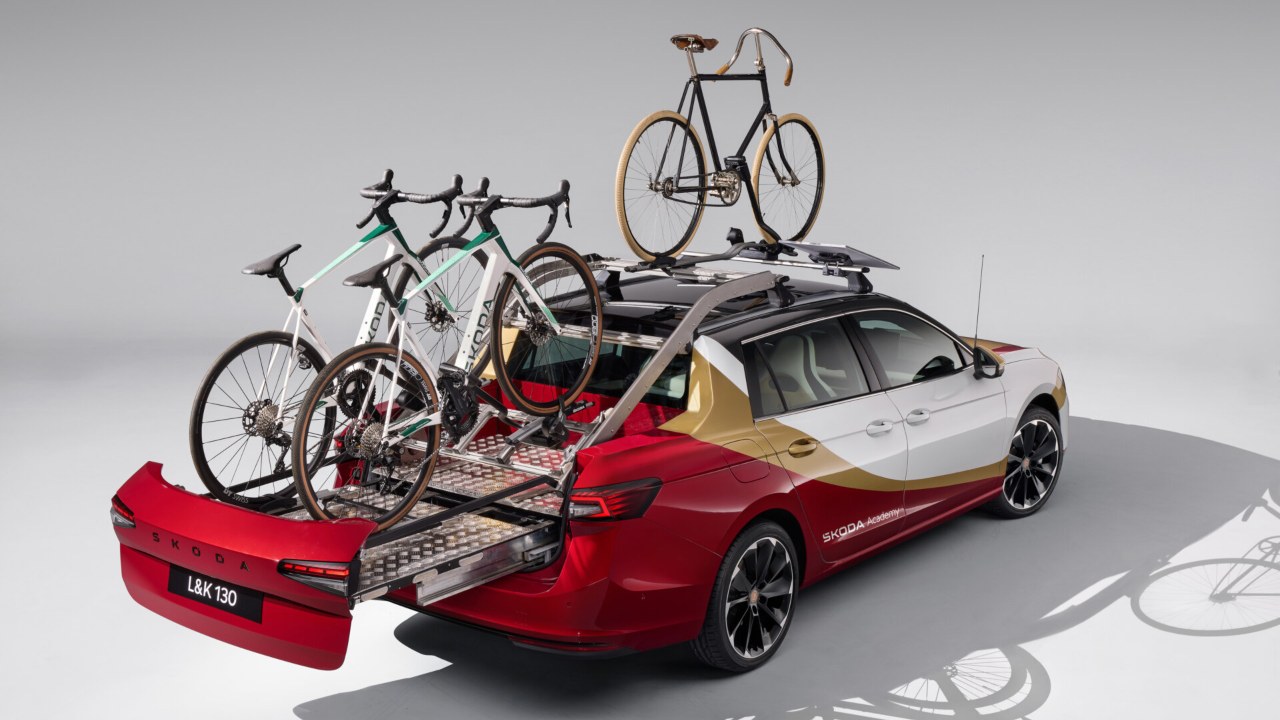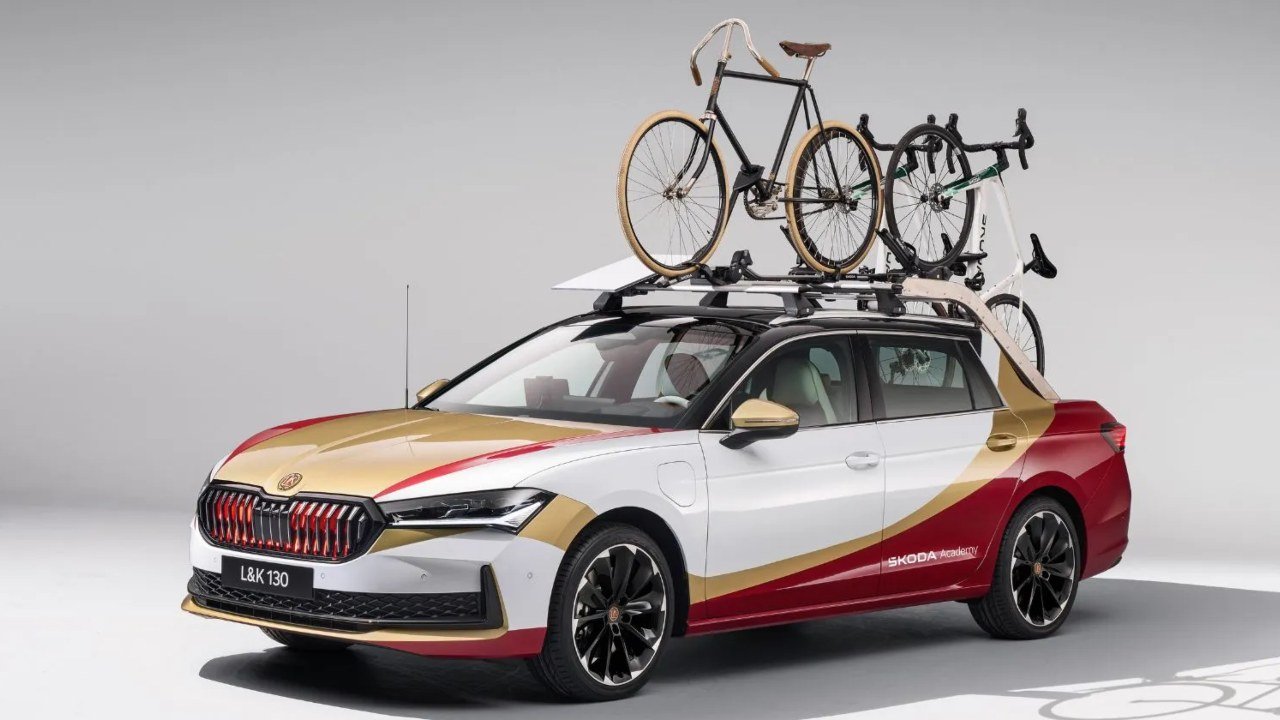In a brilliant fusion of automotive engineering and cycling passion, Škoda’s vocational students have created something extraordinary. For their annual student car project, 28 young talents transformed a Škoda Superb Combi into a cycling race support vehicle, marking the first time the flagship wagon has been used for this tradition while paying tribute to Škoda’s bicycle-making roots from 130 years ago.
What Makes This Student-Built Superb Special?
✔ Pickup-Style Conversion – The rear section was modified into a functional cargo bed with:
-
Sliding rear doors for easy access
-
Roof-mounted bike racks
-
Extended tail section for smoother loading/unloading
✔ Retro-Meets-Modern Design – Honors Škoda’s history with:
-
Gold, red & black Laurin & Klement logos (bonnet, hubcaps, steering wheel)
-
RGB backlit grille (customizable LED colors)
-
“130 years” embroidery on sports seats
✔ Cycling-Focused Interior – Packed with clever additions:
-
Passenger-side display for race data
-
Large cool box for water bottles
-
Overhead storage net for gear
Under the Hood: A First for Student Cars

This isn’t just any modified Superb – it’s the first student car to feature a plug-in hybrid (PHEV) drivetrain, combining:
-
1.5L TSI petrol engine
-
25.7 kWh battery (for electric-only driving)
Why This Matters?
🔹 Tradition Meets Innovation – Škoda began as a bicycle manufacturer in 1895; this build bridges its past and present.
🔹 Real-World Skills – Students tackled structural changes, electrical systems, and interior fabrication – a testament to Škoda’s training program.
🔹 Functional Design – Unlike concept cars, this vehicle is race-ready, proving student projects can be practical.
Fact Check: What’s Next?
✅ Not for Production – A one-off project, but elements (like the RGB grille) could inspire future Škoda designs.
✅ Hybrid Focus – Aligns with Škoda’s EV roadmap; the next-gen Superb will offer PHEV options.
Final Thoughts
More than just a school project, this Superb Combi pickup hybrid celebrates Škoda’s legacy while showcasing emerging talent. Who knows? Some of these students’ ideas might just trickle into future production models!

